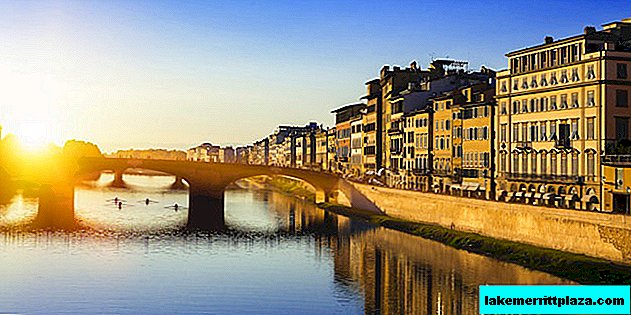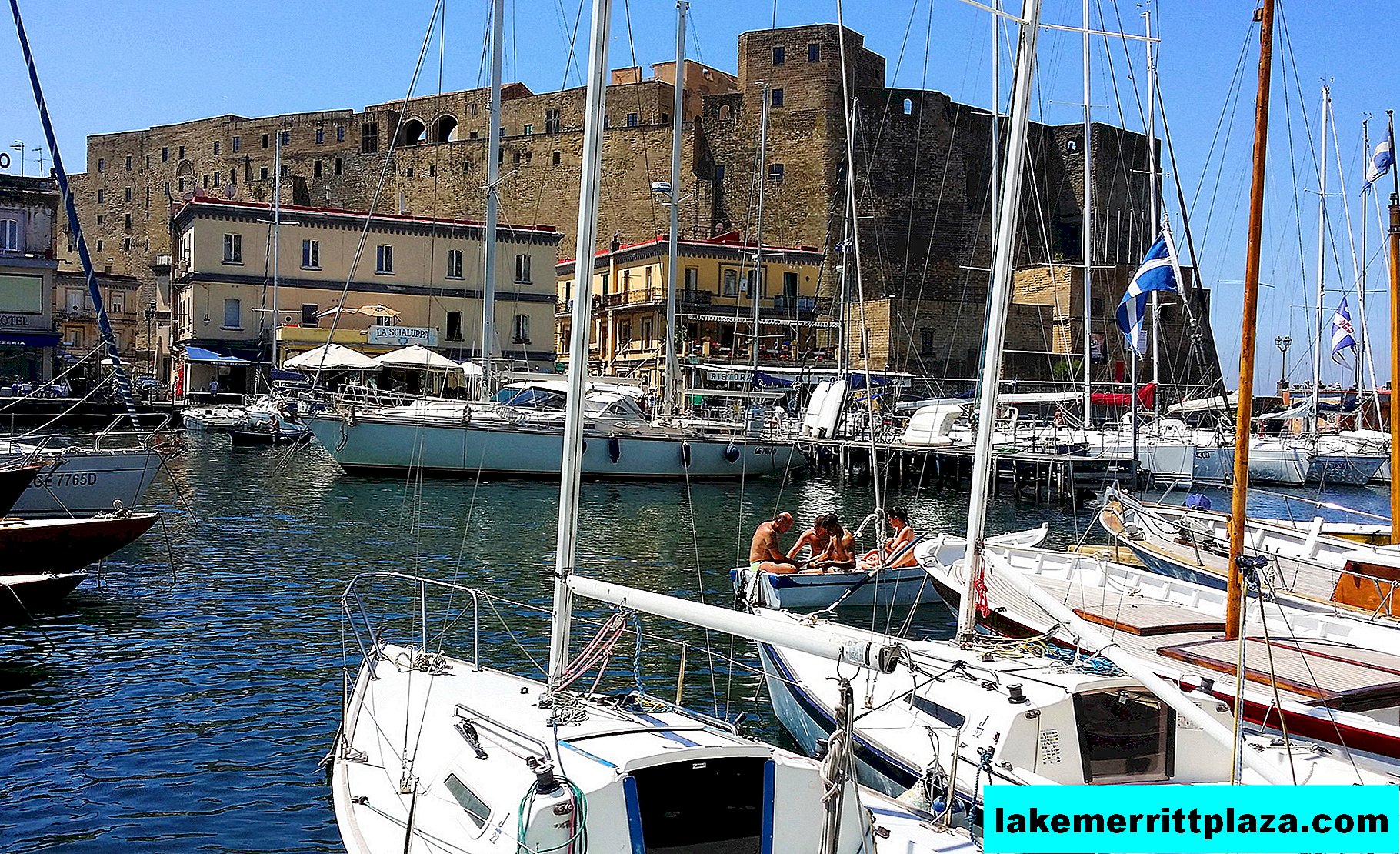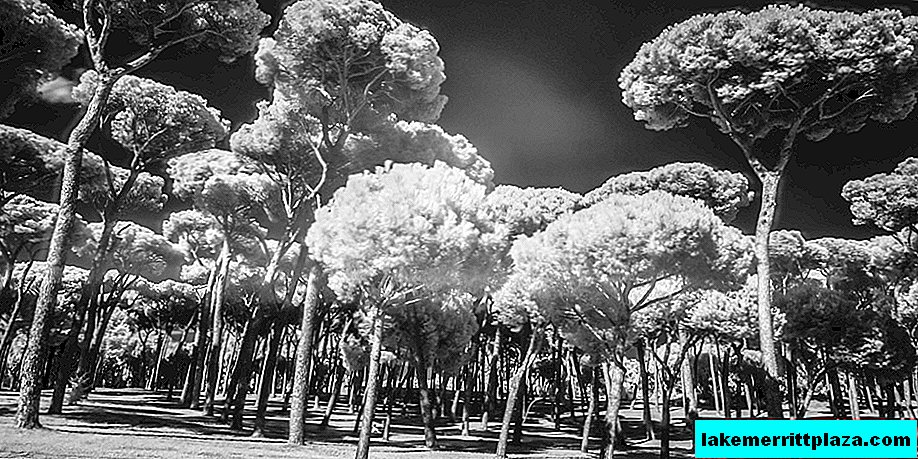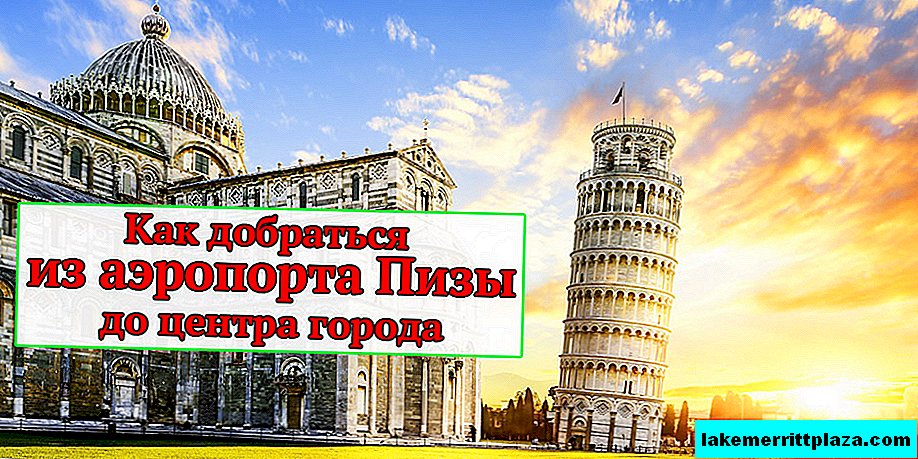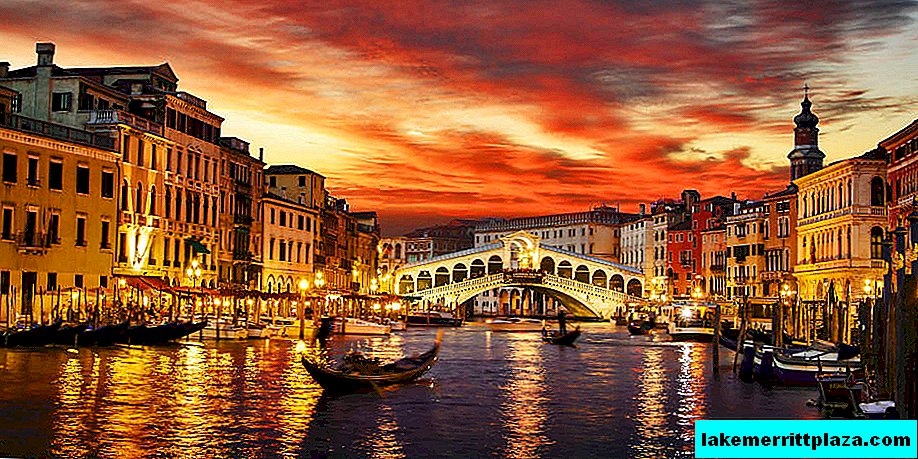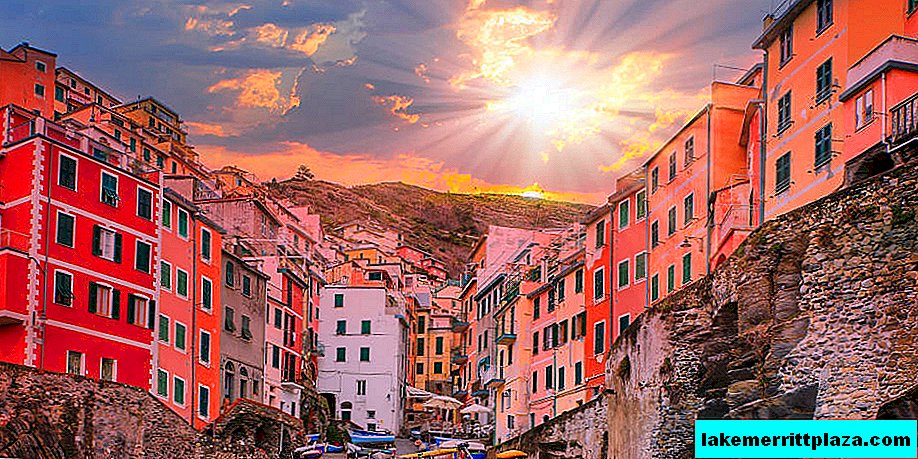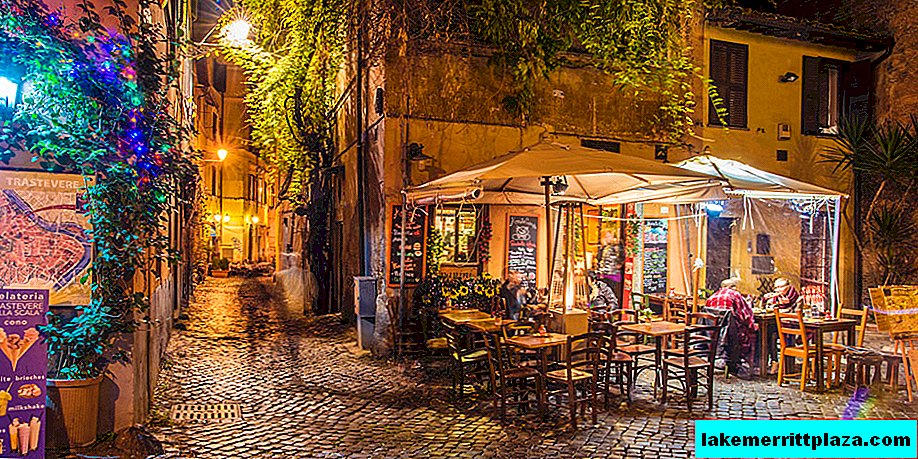Who watched the film "Roman Vacations", he remembers how the protagonist launched his hand in the mouth of truth and .... Walking around Rome, take a look at the Basilica of Santa Maria in Cosmedin and see this marble bas-relief. But be prepared to stand in line to test yourself on a "lie detector" and take a picture with the attraction.

“Mouth of Truth” - stone well cover as a “lie detector”, photo by Bruno Brunelli
Location Mouth of Truth
The ancient stone bas-relief "Lips of Truth" (Bocca della Verità) is attached to the left wall of the narthex of the Church of St. Mary Decorated (Basilica di Santa Maria in Cosmedin - Santa Maria in Cosmedin). The Byzantine-style brick basilica was built in the VI century, in the ancient Forum Boarium district, on the site of an ancient pagan temple. Initially, this church belonged to the community of Byzantine Greeks who fled from the iconoclasts.
At that time, several ancient temples stood on the square. Two of them have survived to our time - this is the Temple of Vesta and the Temple of Fortune Virilis. In the VIII century, during the reconstruction of a dilapidated church, a narthex (narthex) was added to it. The famous marble medallion was installed on the wall of the extension. In his honor, the square was called Piazza Bocca della Verità. Until 1868, death sentences were executed on it.

Piazza Bocca della Verità, photo by Alvaro de Alvariis
Versions of the origin of the locket-cap
The marble disk has a diameter of 1.75 m, a thickness of 19 cm, weight - 1200-1300 kg. It is much older than the church itself - historians attribute its origin to the 4th century. According to one version, the hero of Roman myths Ercol Winner is depicted on marble; according to other assumptions, this is the mask of Triton, the image of the god of all the rivers of the Oceanus, and even the face of Zeus himself. In a detailed study of the erased surfaces of the marble relief, images of dolphins were found on it, framing the face of a deity.
The origin of this artifact is considered very prosaic. Apparently, it served as the cover of the drain of Cloaca Maxima - Big cesspool, abandoned during the early Middle Ages, that is, it was just a sewer manhole. Decorating such an object with the image of a river deity in ancient Rome was a common practice.
There is a legend about a more noble origin of the cap medallion, it is confirmed by verses of Ovid and Homer. The stone mask disk was part of the fountain of Mercury. According to the works of ancient poets, Roman merchants and merchants performed ritual ablutions with water from this fountain - so they sought to prove their honesty when concluding transactions. Ancient merchants sprinkled their goods with the same water.
Lie detector
When the mask was installed in the narthex of the temple, it was considered something like an oracle pronouncing prophecies. Then it was made a kind of "lie detector." Using a stone disk, people suspected of treason, fraud or theft were publicly tested. The test men and women had to put their hands in the open "mouth" of the marble deity. Nothing happened to an honest man, but a thief, a robber or a traitor wife risked being crippled. The stone mouth closed, the deity "bit off" the sinner's hand. Documents were later discovered stating that an executioner was sitting behind a wall, chopping off a suspect's hands.
Modern guides tell many stories about people affected by the “Mouth of Truth” and about the lucky ones who escaped torture and publicly confirmed their honesty.
Marble Slab Photoshoot

Photo for memory
Donation boxes are installed next to the stone sculpture on both sides of the aisle. Photoshoot with an ancient oracle paid. Many people aspire to a mask - tourists of different faiths vying with each other prove their honesty to a pagan deity. The order is supervised by a special minister. Near the ancient artifact there is a warning sign: "Only one photo", but the rule is constantly violated. The "test" tourists pose several times, boldly plunging their hands into the open marble lips - after all, there is no executioner behind the wall of the temple.
The mouth of truth in cinema

The film "Roman holidays"
The Italian artifact Bocca della Verita has gained world fame since 1953, after the publication of William Wyler's film "Roman Vacations". It is here, near the temple, in front of The Mouth of Truth that the famous scene between Anna and Joe (Audrey Hepburn and Gregory Peck) was shot. Gregory played the episode of "nibbling his arm" in such a way that Audrey's horror was natural.
In 1900, composer Heinrich Platzbeker wrote the operetta “The Mouth of Truth”. And in our time, the image of the stone oracle was replicated in video games.
To go through the "inquiry procedure" and take spectacular photos, tourists have to defend a considerable queue, however, a stream of comers strives here continuously. Church of St. Mary the Decorated is open daily. They say that the relics of St. Valentine are stored in the crypt of this temple.

Queue to the Mouth of Truth
Church of Sant Maria in Cosmedin
In the winter from 09:30 - 17:00;
in the summer from 09:30 - 18:00.
The entrance is free,
waiting time in line about 10-20 minutes.
How to get there
Bus: 51.81.85.87.118.160.628.715, C3 - Greca stop,
No. 44, 44F, 83,170,716,781, No. 3, No. 9, No. 19 - stop Bocca della Verità,
23,280, No. 10 - Lungotevere Aventino;
Metro Line B - Circo Massimo Station.

